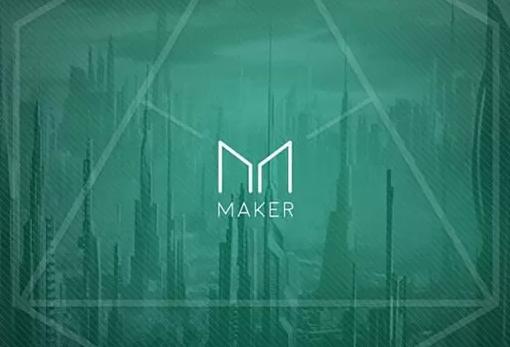The central bank stabilizes MakerDAO, once again overturning the governance paradigm (Part 2)
Author: CYC Labs
When considering whether a protocol is a good protocol, the first aspect is a good product, followed by governance issues. Undoubtedly, MakerDAO, as the "central bank" on Ethereum, has successfully updated the paradigm of the entire industry. Central Bank Stabilizes MakerDAO, Once Again Disrupting Governance Paradigms (Part 1) discusses MakerDAO's proposals and focuses on the governance of various sectors within MakerDAO. This article will analyze the recent governance hot topic, The Endgame Plan, what it is, and the reasons for the formation of its most important role, MetaDAO, along with several adaptive implementation solutions.
MetaDAO alleviates the burden of governance processes and improves the governance issues of the ecosystem

Before we start the article, let's take a brief look at what the most important role proposed in the Endgame Plan, MetaDAO, actually is.
The purpose of constructing MetaDAO in MakerDAO is to promote new DAOs that can alleviate the governance burden from the core DAO processes. However, each MetaDAO still needs to contribute to solving the governance issues present in the Maker ecosystem.
Each MetaDAO can be seen as a subdivision of MakerDAO, which will issue its own tokens to gather a group of Maker members interested in its specific goals. Of course, in addition to each MetaDAO being able to distribute its own tokens to drive community operations, MetaDAO can also freely organize, combine, and disband, and can even request external support if necessary.
On this basis, MakerDAO can make trade-offs based on the performance of each business at any time. If a business can sustainably promote the development of the protocol, it will be prioritized for development. However, if a MetaDAO does not bring returns to the protocol, it can be directly cut off. In summary, it retains the right for subDAOs to independently issue tokens to incentivize contributors while providing flexibility for organizational structure adjustments through pods.
Chaotic governance status, governance processes stagnate

Image source: MakerDAO Forum
The entire Endgame Plan aims to transform the existing chaotic governance issues of MakerDAO (from the left image to the right image), making the governance process clearer.
So let's analyze why the governance status of MakerDAO is as depicted in the left image, with blurred functions.

Currently, MakerDAO is facing a stagnant governance status, leading to governance paralysis. Although we all understand that governance paralysis is an issue that protocols cannot avoid at this stage, what are the specific reasons for MakerDAO's governance paralysis?
- Complex governance processes. In the governance process, most departments are intertwined, but there are no clear responsibilities, making it difficult to sustainably promote tasks.
- Governance apathy. Voters show low initiative in participating in proposal voting, are uninterested in governance participation, and lack incentives for governance involvement.
- Core Units (CUs) hold significant power. Core units determine the priority and importance of submitted proposals and play a decisive role in whether funds are allocated to proposals. The article will later discuss Focus Objectives.
Having identified the above issues, MakerDAO proposed MetaDAO to address governance paralysis. Based on this issue, we delve deeper and trace the origins of MetaDAO, discovering that its structure is inspired by Google's parent company, Alphabet.
Predecessor Alphabet, subsidiaries enjoy complete autonomy and control

Google, as the core driving force within Alphabet, has complete autonomy and control over its key resources and products. In addition to borrowing the complete autonomy and control enjoyed by MetaDAO within the entire protocol, it also integrates blockchain elements based on Alphabet, with each subDAO having its own tokens as rewards.
Now that we understand the structure of MetaDAO, let's see how MakerDAO effectively allocates resources. MakerDAO currently uses a tool called Focus Objectives for resource allocation.

Focus Objectives functions like a champagne tower waterfall. The cups at the top receive the most resources, while proposals at the bottom receive less. Within the CU, priorities and weights are sorted based on their influence on the protocol. Finally, the core unit provides budget ranges and resource allocations based on priorities and weights. Although this method distributes the quality of proposals and effectively allocates resources, it does not consider the autonomy and control of subDAOs, leaving the governance process cumbersome and slow.
MetaDAO talent incentive system, attracting quality BAs to join

Let's review the four types of original MakerDAO token holders and see how they incentivize their labor:
- Create a Voter Committee: Participation requires staking MKR, locking MKR to receive incentives.
- Empower Delegated Representatives: Delegates in a representative system complete tasks to receive incentives.
- Core Units (CUs): The existing issue is the disconnect between CUs and voter representatives' needs.
- External Support: Attract external experts using tokens in exchange for labor services.
While MakerDAO considers incentives among holders, it is evident that there is a disconnect between voters, delegated representatives, and core units. So how does MetaDAO optimize the structure for holders? It transforms core units into a service for MetaDAO, alleviating concerns about excessive power. Additionally, a new unit, the "Budget Allocator," is introduced.

- Voter Committee
- Delegated Representatives
- Budget Allocator: A new role in MetaDAO focused on better development of the protocol. The Budget Allocator also addresses the shortcomings of Focus Objectives, primarily responsible for marginally adjusting the operational budget of core units based on performance, plans, and new information. A management fee is charged based on the scale of budget allocation, which serves as an incentive for the BA. This will attract talented individuals to join the BA, fostering healthy competition.
New paradigm for budget allocation, boldly adopting effective voting and relatively global budget distribution
1. Budget allocation model determined proportionally based on effective voting.
For example, if one group has 70% of the effective votes while another group has 30%, in the current model, the group with 70% effective votes will receive 100% of the budget. However, in the budget allocation paradigm, the group with 70% positive votes will receive 70% of the budget, while the group with 30% positive votes will also participate and receive 30% of the budget.
2. BA uses the most effective method of relative global budget allocation.
In addition to a fixed budget, there is also relative global budget allocation (the budget pool's funds come from the surplus of all MakerDAO protocols). This standard is based on whether the MetaDAO's smart contract has protocol surplus; when there is a protocol surplus, the budget increases; if protocol income begins to dwindle, the budget will automatically decrease to reduce governance friction.
The establishment of the Budget Allocator brings a paradigm shift; CUs are no longer the main entities hiring and controlling all budget allocations. Instead, it has become a service provided to MetaDAO. This creates a state of mutual checks and balances: MetaDAO appoints CUs, the talent pool utilizes tokens to incentivize labor, and when labor is saturated, the remaining labor can continue to seek other MetaDAOs, with holders ultimately receiving rewards based on the impact and income of MetaDAO on the protocol.
Three practical MetaDAO incentive systems suitable for different scenarios
After discussing the governance issues and new organizational models, MakerDAO practices three different incentive systems (the three most common long-term scenarios): top-down income distribution, bottom-up income distribution, and D3M model distribution.
1. Top-down (classic, most used): Current income distribution method
Budget allocation is distributed by CUs based on priorities. MakerDAO sets up a department to collect quotes and work estimates; after gathering the information, it begins to pay the agreed budget.

Image source: MakerDAO Forum
2. Bottom-up (D2D): Bounty system
Approved by Maker Governance, work is submitted for review by core units after completion, and rewards are paid upon approval.

Image source: MakerDAO Forum
3. D3M (most scalable, best suited for MetaDAO)
This means Maker does not participate in any synchronous steps of activity work, such as contacting assets or joining collateral in vaults. MetaDAO simply receives a global debt ceiling provided by Maker and pays specific capital costs, then can freely decide how to handle it using its internal resources, following the basic power flow of MetaDAO managing core units (MACU) to prioritize and spend budgets. MetaDAO contributes core units (MCCU) to complete work, which is then reviewed, approved, and voted on by MetaDAO governance for the final work product.

Image source: MakerDAO Forum
Conclusion
Although MakerDAO's new idea, MetaDAO, has not yet been voted on, it is foreseeable that if this proposal is implemented, it is likely to bring new insights to the entire industry, thereby disrupting the governance paradigm:
The Endgame Plan allows for free combinations, with high combinability, reducing trial and error costs. Using traditional internet departments as an example, I can develop multiple organizations simultaneously, allowing various small departments to compete. Once it is discovered that a department is not profitable or is dragging behind, it can be cut off at any time. Of course, doing so may also yield excess returns. As long as one department is profitable, it can completely cover all previous losses.
The degree of specialization increases geometrically compared to the past when functions were unclear. MetaDAO is currently an optimized structural choice for DAOs, allowing for some parts to be split and combined. This helps the protocol concentrate its capabilities on smaller, more manageable parts.
High automation, simple and independent operational mechanisms. The divided departments or individuals can operate automatically without understanding the operational status of other departments. When an organization needs to understand the context, the governance and operation of the entire organization may feel redundant, sluggish, and unmanageable. This raises the question of whether the close overlap between each organization and department is too high, indicating a lack of proper division.
Using input-output ratio as a metric to incentivize participation in governance, minimizing governance apathy and bribery. The potential reasons for voter apathy in governance are simply that governance participation feels useless and governance incentives are inadequate. When a governance incentive touches the psychological expectations of voters, all actions of the protocol become linked to rewards, leading to a greater tendency for individuals to invest their time and energy in the protocol. Additionally, this can effectively prevent bribery. Voters casually delegating their voting rights to others does not necessarily improve the situation compared to governance apathy.
No longer a burden of past bureaucracies, replaced by a subcontracting economy under free market competition. The realization of a subcontracting economy allows organizations to no longer rely on fixed personnel for participation. Organizations can adjust the number of participants based on existing conditions, flexibly arrange the use of compensation, and create a healthy competitive environment.
Note: As The Endgame Plan is currently only updated to Part 3, CYC will continue to monitor this proposal.
References:
https://blog.makerdao.com/makerdao-has-come-full-circle/
https://makerdao.com/zh-CN/whitepaper/
https://twitter.com/n4motto/status/1534642569220706304
https://newsletter.tally.xyz/p/the-tally-newsletter-issue-73











